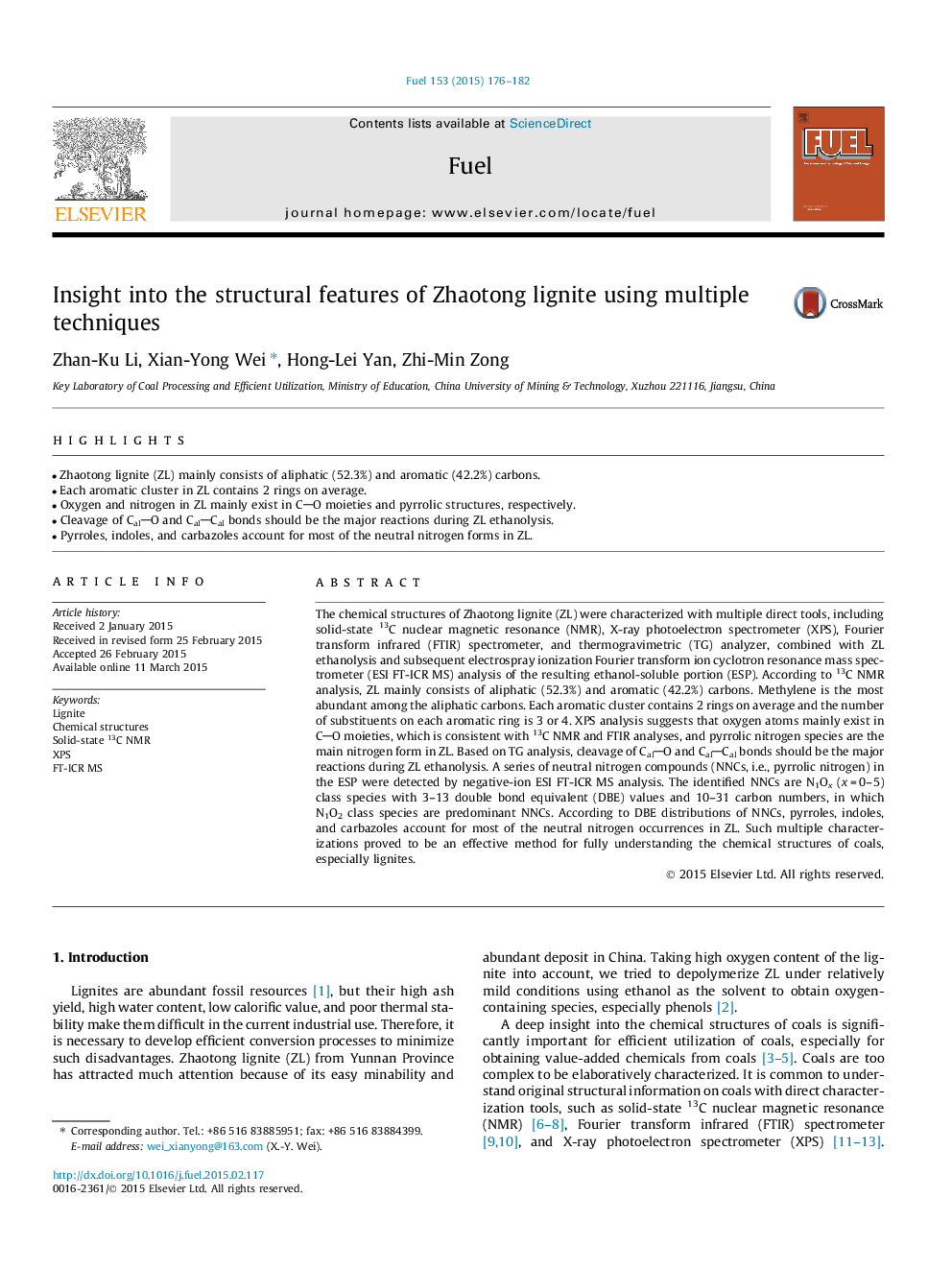| Article ID | Journal | Published Year | Pages | File Type |
|---|---|---|---|---|
| 6635567 | Fuel | 2015 | 7 Pages |
Abstract
The chemical structures of Zhaotong lignite (ZL) were characterized with multiple direct tools, including solid-state 13C nuclear magnetic resonance (NMR), X-ray photoelectron spectrometer (XPS), Fourier transform infrared (FTIR) spectrometer, and thermogravimetric (TG) analyzer, combined with ZL ethanolysis and subsequent electrospray ionization Fourier transform ion cyclotron resonance mass spectrometer (ESI FT-ICR MS) analysis of the resulting ethanol-soluble portion (ESP). According to 13C NMR analysis, ZL mainly consists of aliphatic (52.3%) and aromatic (42.2%) carbons. Methylene is the most abundant among the aliphatic carbons. Each aromatic cluster contains 2 rings on average and the number of substituents on each aromatic ring is 3 or 4. XPS analysis suggests that oxygen atoms mainly exist in CO moieties, which is consistent with 13C NMR and FTIR analyses, and pyrrolic nitrogen species are the main nitrogen form in ZL. Based on TG analysis, cleavage of CalO and CalCal bonds should be the major reactions during ZL ethanolysis. A series of neutral nitrogen compounds (NNCs, i.e., pyrrolic nitrogen) in the ESP were detected by negative-ion ESI FT-ICR MS analysis. The identified NNCs are N1Ox (x = 0-5) class species with 3-13 double bond equivalent (DBE) values and 10-31 carbon numbers, in which N1O2 class species are predominant NNCs. According to DBE distributions of NNCs, pyrroles, indoles, and carbazoles account for most of the neutral nitrogen occurrences in ZL. Such multiple characterizations proved to be an effective method for fully understanding the chemical structures of coals, especially lignites.
Related Topics
Physical Sciences and Engineering
Chemical Engineering
Chemical Engineering (General)
Authors
Zhan-Ku Li, Xian-Yong Wei, Hong-Lei Yan, Zhi-Min Zong,
